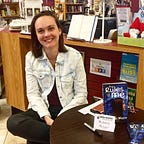Get Ready for the Rise and Discomfort of Isolation Horror
Horror movies stop being fun when we’re living the experience, psychology proves it
Horror is a reactionary genre. You can learn a lot about a society and the cultural happenings of a time by looking at what scared the people then. Pro-religious McCarthyism and moral panics of the back half of the 20th century which burgeoned films like Rosemary's Baby (1968), The Exorcist (1973), and The Omen (1976). The 1990s focus on metafiction and postmodernism led to self-evaluating films like Scream (1996) and Blair Witch Project (1999). So, what will the COVID-19 pandemic lead to?
The most famous isolation horror book and film by far would by Stephen King’s The Shining. Set in a remote and snowbound region of Colorado in the dead of winter, it features a family of three holed up in a malicious hotel, fighting both supernatural forces and the dangers of cabin fever. Stanley Kubrick’s film, arguably more famous than its source material, leans into the psychological effects. Nothing the Overlook shows the Torrance family is anything they didn’t already bring in: tension, fears of Jack’s physical abuse, alcoholism, paranoia. It festers in their isolation until Jack is driven mad by his own writer’s block, recovering alcohol dependency, and imagined ghosts in the hotel to chase his family with an ax.
Many pieces of isolation horror like to play with group dynamics. The horror video game Until Dawn (2015) had a story built just as much on interpersonal dynamics between character as it was on the environment. The story follows a group of young adults taking a weekend trip to a rural mountain cabin in Alberta a year after the death of two of their friends. Throughout the game, the player is given the ability to make hundreds of choices that affect the relationships and attitudes between characters. The result is important, it decides who lives, who dies, and the identity of the killer in over 200 possible endings. The second season of Netflix’s Slasher also played on group dynamics with a killer on the loose during a friend group’s getaway to a ski cabin where they are keeping a dark secret.
There’s psychology to back this up. Behavioral relationship expert and podcast host Tracy Crossley spoke of the effects of forced cohabitation on SuperDataScience’s podcast. She highlighted the quarantine's ability to reveal triggers people didn’t know they had and putting on display parts of peoples’ personalities that were otherwise lost in the noise of everyday life. Isolation horror involving groups plays on this dynamic to great success. You’re not used to spending this amount of time with anyone, things are bound to come up.
But then there’s the isolation horror where one finds themselves completely alone, or at least singularly lonely even when surrounded by others. Charlotte Perkins Gilman’s famous short story “The Yellow Wallpaper” features a woman suffering from postpartum depression, forcibly isolated in a room where she begins to hallucinate that a woman is trapped in the walls. And then there is Henry James’ novella Turn of the Screw. This story features governess sent to look after a pair of troubled children in the English countryside where things quickly begin to unravel thanks to psychological breaks, hallucinated supernatural scenes, and the subtle threat of female sexuality.
That’s, ultimately, what isolation horror is all about. The Torrances face evils that already existed in their family dynamics. The group of Until Dawn had baggage to spare and histories between each other. The governess from Turn is battling her demons of female guilt. Isolation horror is a mirror. All horror is a mirror, but isolation forces us to not so much look at our society in a macro sense as all horror does, but asks us to look at ourselves individually. What would we hate about these scenarios? What would be the hardest for us? What would we dislike the most about the people we’re trapped with, even if it’s loved ones? Like Tracy Crossley says, it’s an examination in ourselves, in others, and in our relationships. And the horror stories rely on the strong possibility that most of us don’t do a very good job checking in with ourselves. Isolation horror is the fear of not of being trapped, but being trapped with a mirror.
This type of horror story is going to find a revival in the next few years as we all reel from the painful consequences of a pandemic. Sociologist and fear expert Dr. Margee Kerr has devoted her life to studying what it is about fear and horror that draws us in. One huge aspect of her work is the concept of “fun scary”, that is, fear and horror where you know you’re safe and allow yourself to engage. It’s the mechanism that drives most of us to seek out horror films and haunted attractions at Halloween. That gets taken away when we feel we can’t escape what we’re experiencing.
“It’s not fun anymore, and your attention shifts to actual survival.” — Margee Kerr, POPSUGAR
The key component that makes horror films and books work is the willing engagement with something that we know we can escape. Right now, many of us are unwilling and we’re experiencing things we’ve only ever seen in these movies. That breaks the formula. Many creators will look for a catharsis of what they’re feeling but will those stories have the same entertainment value and potency when that main character is us? We’ll find out soon. After all, another adaption of Turn of the Screw is coming from acclaimed writer/director Mike Flannagan this October. Perhaps it will be the first test to our post-isolation psychologies.
